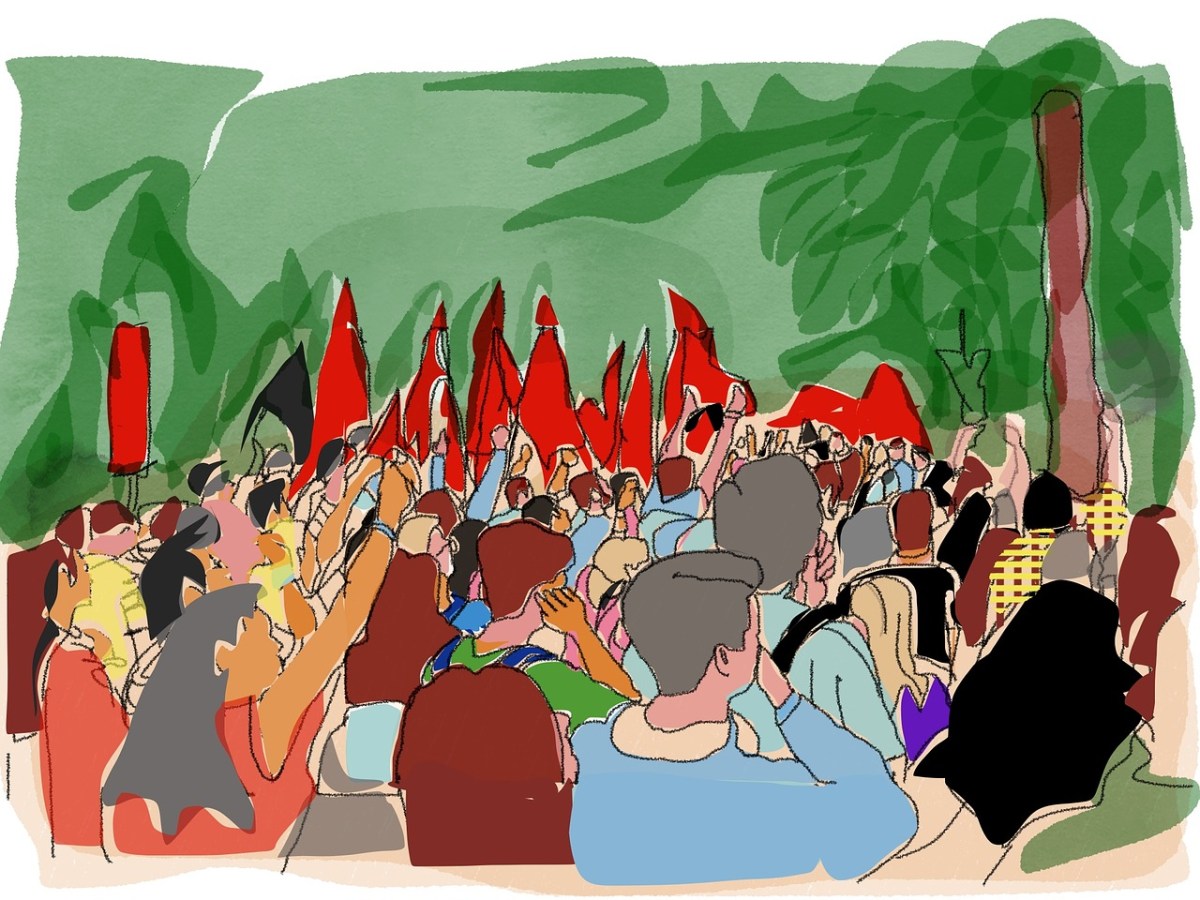In September 2020, the Delhi Commission for Protection of Child Rights (DCPCR) and the Directorate of Education initiated a joint project called the Early Warning System that utilizes school attendance records to develop interventions to curb dropouts by identified at-risk children.
Prolonged absenteeism can lead to failing the course, especially in rural areas where students lack the financial resources to learn externally. Studies have shown that students who regularly attend school tend to perform better than those who are always absent, as frequent practising of skills helps build one’s ability to perform better than infrequent learning. It is thus essential to note absences and their reasons to ensure a balanced and consistent education for all.
DCPCR developed the policy expecting that the Covid-19 pandemic would lead to a rise in school absenteeism. The pandemic delayed the policy’s roll-out, but a pilot was initiated in October 2021, and the Commission fully implemented the policy in April 2022. DCPCR chairman Anurag Kundu explained that reduced or prolonged attendance as a metric would help gauge whether a child was facing a crisis at home that is affecting their education. The primary causes for absenteeism detected in the pilot included sickness in the family, moving back to the village, lack of parental awareness, labour, early marriage, taking care of household chores, and death.
The system will send an automated SMS to the parent/guardian of any student who has missed more than 66% of working days in a month or missed more than seven days in a row. If there is no response, it will send an Interactive Voice Response (IVRS) call to understand the reason for absenteeism and make a note in the system if anything is detected. If there is still no response, the teacher will call the parents up and enter the details in the system. If the parents are unreachable or the child is detected to be “high-risk”, home visits will be conducted and adequate steps are taken on a case by case basis.
Given the policy’s recent implementation, there isn’t substantial data on the interventions made in girls’ cases compared to boys. While the policy remains ungendered mainly, it is crucial to consider the differing reasons for absenteeism amongst girls and boys. Among adolescent boys, the most significant cause of missing school has been child labour which has been hard to solve since counselling and encouraging them to go to school may help, but the families still need their income. Amongst girls, on the other hand, the most prominent causes include early marriage and menstruation. Kundu said that four of their successful interventions were in cases where parents wanted to get their daughters, ages 15-17, married. The parents were counselled to push this decision until after they completed school.
The policy could become fully functional only in April since its implementation depended on students physically attending school, which was optional until now due to the pandemic. The policy also made no arrangements for online schools or helping those facing difficulty accessing education while they were at home. In 2021, a Delhi-based NGO conducted a survey and found that 56.1% of girls had an increased responsibility to complete domestic chores during the pandemic with less time to focus on their education. Studies show a gender-based digital device, with 33.6% of girls not having access to digital devices and 64% saying that boys had more access to devices and the internet in their communities. Many girls studying before the pandemic couldn’t return to classes as their families didn’t want to spend their savings on their daughters’ education.
Unicef released an alarming report predicting that 10 million more girls would be at risk of child marriage by the end of the decade due to the pandemic. Education is a protective factor against child marriage. Still, with school closure and increased economic strain, girls are pushed into marriage as a last resort to help ease the family’s financial burden. Strict policies, ensuring access to health services and providing social support to families are vital to ensure girls stay in school. Similarly, another significant problem faced by girls attending school is menstruation.
A 2018 Delhi based study found that 40% of girls didn’t go to school while menstruating. The fear and embarrassment that breeds from the social stigmas around menstruation and the lack of proper sanitary materials, no privacy at school, restrictions imposed on girls, and their mother’s education lead to a drop in attendance which hampers education. Not addressing these things in policy means that little will be able to be done when the issues arise. Interventions to reduce social taboos, increase awareness, provide healthcare and expand the curriculum to provide sound information are essential to combat this problem. The Early Warning System, like other policies, should find ways to implement interventions that account for these factors and include clauses that aim to address these gender-specific issues.
The National Education Policy of 2020 faced a similar backlash. Specific provisions might promote girls’ education, such as the provision of a Gender Inclusion Fund which would be utilized towards an equitable education for girls and transgender students and an increase in public investment to bring down education spending. This policy, however, encouraged public-private partnership in education which might lead to more schools turning private and becoming inaccessible and unaffordable. Increased tuition would make it harder to convince families to spend on girls’ education and lead to them dropping out.
While the EWS didn’t mention digital education, the NEP pressed on it without making any provisions for the infrastructure required. The policy’s consolidation of school complexes provision would increase dependence on Open School, the national distance learning program. Any emphasis on this for girls would lead to increased domesticity and curbs on their freedom where they would have a degree but not be able to do much with it. Here, not including girls’ education and other marginalized communities in the policy leads to exclusion. It is crucial to look at policy-making from a gender lens and make gender-specific policies to ensure genuinely equitable education for girls.
The system will send an automated SMS to the parent/guardian any student who has missed more than 66% of working days in a month or missed more than 7 days in a row. If there is no response, it will send an Interactive Voice Response (IVRS) call to understand the reason for absenteeism and make a note in the system if anything is detected. If there is still no response, the teacher will call the parents up and will enter the details in the system. Home visits are conducted if the parents are unreachable or the child is detected to be “high-risk” and adequate steps are taken on a case by case basis.
Given the policy’s recent implementation, there isn’t substantial data on the interventions made in the cases of girls as compared to boys. While the policy remains largely ungendered, it is important to consider the differing reasons for absenteeism amongst girls and boys. Among adolescent boys, the biggest cause for missing school has been child labour which has been hard to solve since councelling and encouraging them to go to school may help but the families still need their income. Amongst girls on the other hand, the biggest causes include early marriage and menstruation. Kundu said that four of their successful interventions were in cases where parents wanted to get their daughters ages between 15 and 17 married. The parents were counseled to push this decision until after they completed school.
The policy was able to become fully functional only in April given that it can only be implemented when students are physically attending school which was optional until now due to the pandemic. The policy also made no arrangements for online school and helping those who were having a hard time accessing education while they were at home. In 2021, a Delhi-based NGO conducted a survey and found that 56.1% of girls had an increased responsibility to complete domestic chores during the pandemic with less time to focus on their education. Studies show a gender-based digital device with 33.6% of girls not having access to digital devices and 64% saying that boys had more access to devices and the internet in their communities. Many girls studying before the pandemic couldn’t return to classes as their families didn’t want to spend their savings on their daughters’ education.
The National Education Policy of 2020 faced similar backlash suggesting that while there were certain provisions that might promote girls’ education such as the provision of a Gender Inclusion Fund which would be utilized towards an equitable education for girls and transgender students and an increase in public investment to bring down education spending. This policy however might lead to schools becoming inaccessible and unaffordable and girls dropping out. It is crucial to look at policy making from a gender lens as well as make gender-specific policies to ensure truly equitable education for girls.
Reya Daya is a third-year student studying psychology and media studies at Ashoka University. Her other interests include writing, photography and music.
Picture credits: Unicef
We publish all articles under a Creative Commons Attribution-NoDerivatives license. This means any news organisation, blog, website, newspaper or newsletter can republish our pieces for free, provided they attribute the original source (OpenAxis).











